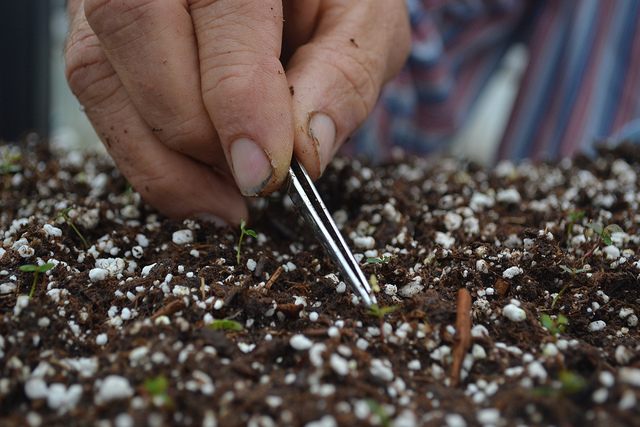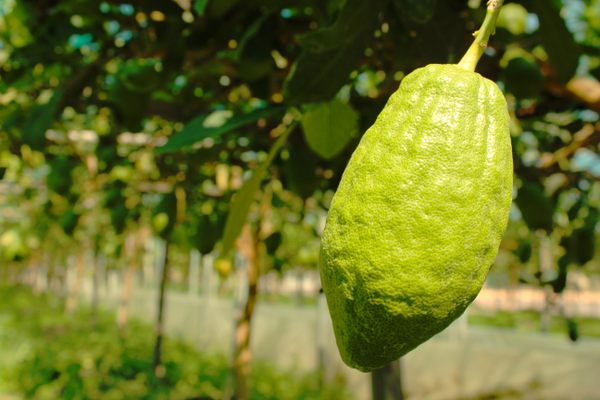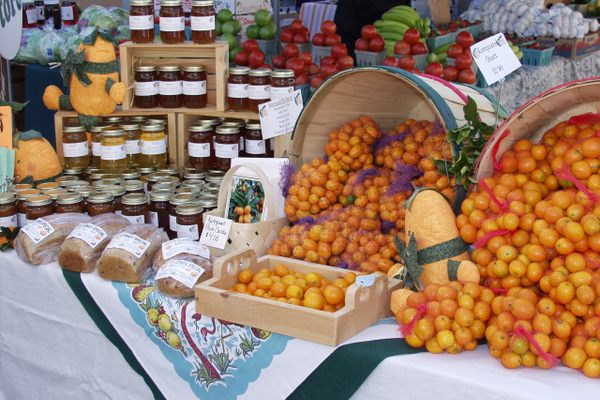The Tooth-Rotting Trials of Building Better-Tasting Berries
How new flavors are created and killed.

Some blueberries are sweet, some delightfully tart, and then, there are some that taste like rotting corpses. Dr. Sarah Taber, now a contract knowledge worker in agriculture and host of the podcast Farm to Taber, has sampled thousands of berries that most of us will never taste. While doing postdoctoral work at the University of Florida’s blueberry breeding program, she got a memorable taste of the at-times frustrating quest to build a better berry.
For most of us, our experience with funky fruit stops at bruised bananas, sour grapes, and moldy strawberries. And that’s largely thanks to breeding programs like the University of Florida’s, where scientists and graduate students weed out stomach-turning breeds in order to find the toothsome varieties that eventually make it to our grocery stores. But, according to Dr. Taber, those folks have gotten a bit of a bad rap.
Consider one headline from PBS: “In quest to grow a better tomato, breeders forgot about taste.” From selecting strawberries to be larger, redder, and flavorless, to breeding the tomato to be tougher and beefier (for shipping purposes) and bland, breeders are often charged with facing a tradeoff between taste, on one hand, and durability and cost, on the other—and consistently choosing the bland, economical option.
But as someone who has popped hundreds of foreign, often foul fruits into her mouth each day to find the best tasting ones, Dr. Taber urges folks to try to understand the industry before wholly blaming it for killing the flavor of fruit. In fact, the closest Dr. Taber came to witnessing dying flavor was encountering a blueberry that, quite literally, tasted like death.
“For some reason, one of these plants was making skatole, the molecule that gives poop its distinctive aroma, and putrescine,” she says, “which is a big part of what makes the characteristic petrifying flesh smell.”
“And cadaverine,” she adds, “which, well, you can guess what that is.”
Dr. Taber spent the majority of her time managing the crossbreeding of new bushes, from hand-pollinating parent flowers to plopping berries in a vintage blender to separate the seeds from the fruit. But every now and then, she was tasked with taste-testing: popping hundreds, sometimes over 1,000, newly bred blueberries into her mouth each day in order to find viable varieties and weed out the bad ones.
UF/IFAS’s breeding program was founded in the 1940s with the goal of developing varieties that could produce fruit in warmer environments. Most blueberry bushes thrive in northern climates with chilly winters, so creating new Florida-friendly, low-chill varieties requires crossing them with native Southern relatives of the bush, which produce berries Dr. Taber describes as “small and sour and seedy and horrible.” While a few varieties were successes, many came out just as sour as their Southern parent.

They were so sour, in fact, that testing called for several eating and spitting techniques in order to spare a taster’s stomach and teeth. First, if anything was strangely shaped—not the ideal spherical blueberry shape—you’d avoid it altogether. Even if it ends up tasting fine, Dr. Taber says, fruits that deviate from the aesthetics of the platonic ideal of a blueberry probably won’t sell. So save your mouth and walk on by.
Second: spit. Folks who didn’t do this quickly learned, as the stuff was so sour it could incite vomiting. “You walk at a steady pace and grab a fruit, stick it in your mouth, and do two chews,” says Taber. “It takes a second for the flavor to hit, and if it makes you want to cry, you just spit it out.” She and her colleagues finessed the art of spitting without sticking out the tongue, rocketing the fruit out of their mouths, blowgun-style, to ensure the sour mush made minimal contact with teeth and tongue.
But even mastering the art of spitting can’t keep one’s teeth safe. “We started bringing fluoride mouth rinse to the field, taking swigs at the end of every row,” she says. Despite her efforts, Dr. Taber got the first cavities of her life after working in the program.
The berries that weren’t tooth-achingly acidic sometimes had a wet-paper-bag kind of taste—which, as unpleasant as it sounds, was more often a relief for testers with sore mouths. Other berries, Dr. Taber recounts, tasted “vaguely like bubblegum.” Only the rare berries that had a balance of sweet and sour, and a crisp, nearly grape-like texture, made it through to the next filter: field performance, or ensuring the plant is a hardy survivor. From this exhaustive process, only a few newly bred berries, out of tens of thousands, proceeded to the final round: the public taste panel.
But here—after all the heavy filtering and flavor scrutiny—is often where the best flavor dies. According to Dr. Taber, customers on the taste panel don’t always choose the most flavorful berries, and more mellow, delicate-flavored berries tend to outperform bolder ones. For instance, Dr. Taber described the Meadowlark as “Bless its heart, a great bush,” but its berries as “a bland-ass water bean.” In tests, though, it was well-received, and pushed to commercialization. While other blueberries in the running had strong blackberry and jammy flavors, they fell short against a berry with a taste, at best, of what Dr. Taber likens to “a faint whiff of violets.”
Having risked her dental health in the search for better berries, Dr. Taber can feel frustrated by the assumption that it’s the scientists de-prioritizing flavor. “I feel like a lot of folks think we must just hang out in the lab all day doing Mr. Burns Fingers, like, ‘How can we make peaches even worse?’” she laughs. “I’m like, dude, I put my teeth on the line for you.” At the end of the day, scientists and breeders aren’t really making the calls. “People tell us what they want, and we have to figure out how to do it.”
Consumer decisions within the grocery store can also contribute to the dampening of flavors. The best example is the tragic case of the Red Delicious. The apple once lived up to its name, but now tastes like slightly sweet styrofoam, due in part to years of prioritizing color over flavor. Dr. Taber speculates that we maintain a foraging mindset while shopping, using aesthetics as a proxy for fruit ripeness and quality, buying the brightest, most colorful produce. “You also have a preference for fruit that’s more consistent in shape, because if you’re out picking bushes, and the fruit is kind of wonky shaped, there’s probably a worm in it.” Thus, we can overlook delicious-tasting fruits that don’t match our mental prototypes, which are often reinforced by sales and marketing.

While discussion of modern produce at times assumes a simple tradeoff between durability or cost and flavor, Dr. Taber’s experience complicates this perspective. In fact, there’s a myriad of factors affecting how good a fruit tastes beyond mere varietal. Dr. Taber recalls giving friends and family Ziploc bags filled with extra berries from the program. People loved them, and asked if they were organic. “We’re like, no, they’re university test berries. We were literally injecting sulphuric acid into the irrigation system to keep them happy … that’s how organic it was,” she says. “It tasted really good because the bushes were spoiled, and they were fresh—that’s it.”
Before pointing fingers, Dr. Taber says, we should look at the micro-decisions we make as shoppers and tasters—and even the ways in which we’ve come to understand what flavor means in the world of produce. Creating new fruits that survive and sell is a complex process, involving a web of different agents making decisions with different incentives. Maybe breeders aren’t the dementors of agriculture, sucking the souls and flavors out of fruits in exchange for a longer shelf life. Unwittingly, we may all be complicit.
Gastro Obscura covers the world’s most wondrous food and drink.
Sign up for our regular newsletter.


































Follow us on Twitter to get the latest on the world's hidden wonders.
Like us on Facebook to get the latest on the world's hidden wonders.
Follow us on Twitter Like us on Facebook